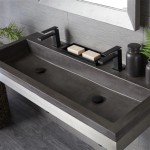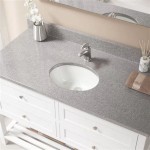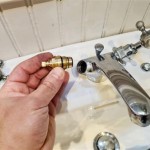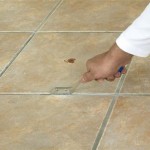How to Treat Mildew on Bathroom Ceiling
Mildew, a type of fungus, is a common problem in bathrooms, especially on ceilings. It thrives in warm, humid environments, and the constant presence of moisture in a bathroom creates the perfect breeding ground. Mildew not only detracts from the aesthetic appeal of a bathroom but can also pose health risks, especially for individuals with respiratory problems. This article will provide a comprehensive guide on how to treat mildew on a bathroom ceiling, ensuring a clean and healthy environment.
Understanding Mildew
Mildew appears as a dark, fuzzy growth, often in shades of black, green, or gray. Unlike mold, which penetrates deeper into surfaces, mildew primarily grows on the surface. However, both are problematic and can cause similar health issues. The key to effectively treating mildew is to understand its growth conditions and how to eliminate them.
Mildew thrives in warm, humid environments. Bathrooms are particularly susceptible due to the presence of steam from showers and baths, which create a moist atmosphere. Poor ventilation can exacerbate the problem, as it traps moisture and allows mildew to flourish. Therefore, addressing these factors is crucial in preventing and treating mildew.
Treating Mildew on Bathroom Ceiling
There are multiple approaches to treating mildew on a bathroom ceiling. Each method has its own advantages and disadvantages, and the best option depends on the severity of the mildew infestation and the desired level of effort.
1. Cleaning with Bleach Solution
A bleach solution is a widely used and effective method for treating mildew. Bleach is a powerful disinfectant that can kill mildew spores and prevent further growth. However, it is crucial to use bleach safely and cautiously. Always wear protective gear such as gloves, goggles, and a mask to avoid skin and respiratory irritation.
To prepare a bleach solution, mix one part bleach with ten parts water. Apply the solution to the affected areas using a spray bottle or a sponge. Allow the bleach solution to sit for 10-15 minutes before scrubbing it off with a brush or sponge. Rinse the area thoroughly with water to remove any bleach residue.
While bleach is effective, it can also damage certain surfaces. Test the bleach solution on an inconspicuous area first to ensure it does not cause discoloration or damage. For porous surfaces like drywall, a diluted bleach solution is recommended to minimize damage.
2. Using Commercial Mildew Removers
Commercial mildew removers are readily available at hardware stores and home improvement centers. They are formulated specifically to kill mildew and often contain bleach or other potent disinfectants. Follow the instructions on the product label carefully, as some products may require different application methods or drying times.
Commercial mildew removers can be convenient and effective, but they may contain harsh chemicals that can irritate skin and respiratory systems. Always wear protective gear and ensure proper ventilation during application. After using a commercial mildew remover, rinse the area thoroughly with water.
3. Applying Borax
Borax is a natural mineral that has antifungal properties and can be used to treat mildew. It is less harsh than bleach and may be a safer option for sensitive individuals. To use borax, mix one part borax with two parts water to create a paste. Apply the paste to the affected areas and allow it to dry completely. Scrub the area with a brush and rinse thoroughly with water.
While borax is generally safe, it is important to keep it out of reach of children and pets. It can irritate skin and eyes if not handled properly. Avoid inhaling borax dust, as it may cause respiratory irritation.
Preventing Mildew Growth
Treating mildew is only a temporary solution. To prevent mildew from returning, addressing the underlying causes of growth is essential. These include:
1. Improving Ventilation: Ensure adequate ventilation in the bathroom by using an exhaust fan during and after showers or baths. Open windows when possible to circulate fresh air.
2. Reducing Moisture: Wipe down surfaces after showers or baths to remove excess moisture. Regularly clean the showerhead and faucet to prevent water buildup. Use a squeegee to wipe down the shower walls after each use.
3. Maintaining Dry Surfaces: Ensure the bathroom floor is dry and free of spills. Clean and dry any wet areas promptly to prevent mildew growth.
4. Regular Cleaning: Clean the bathroom regularly, including the ceiling, walls, and floors. Use a mildew-resistant cleaner or a solution of bleach and water to remove dirt and grime, which can provide a breeding ground for mildew.
By following these recommendations, you can effectively prevent mildew growth and maintain a clean and healthy bathroom environment.

Bathroom Ceiling Mold Removal When To Clean Call Branch Environmental

Cleaning Mold From Bathroom Ceilings Like A Pro Lovetoknow

What Is The Best Way To Remove Mold From Bathroom Ceiling

Mold On Bathroom Ceiling How To Clean Off

Mold On Bathroom Ceiling How To Remove From

How To Get Rid Of Mold On Your Bathroom Ceiling Aqa

Mold On Bathroom Ceiling Wipe Out With Diy Remedies

What To Do When You Spot Mold In The Bathroom

Black Spots On The Bathroom Ceiling Flood Water Damage Honolulu Oahu Hawaii Md Restoration

Cleaning Mrs Hinch Fans Share Tips To Remove Ceiling Mould Express Co
Related Posts







